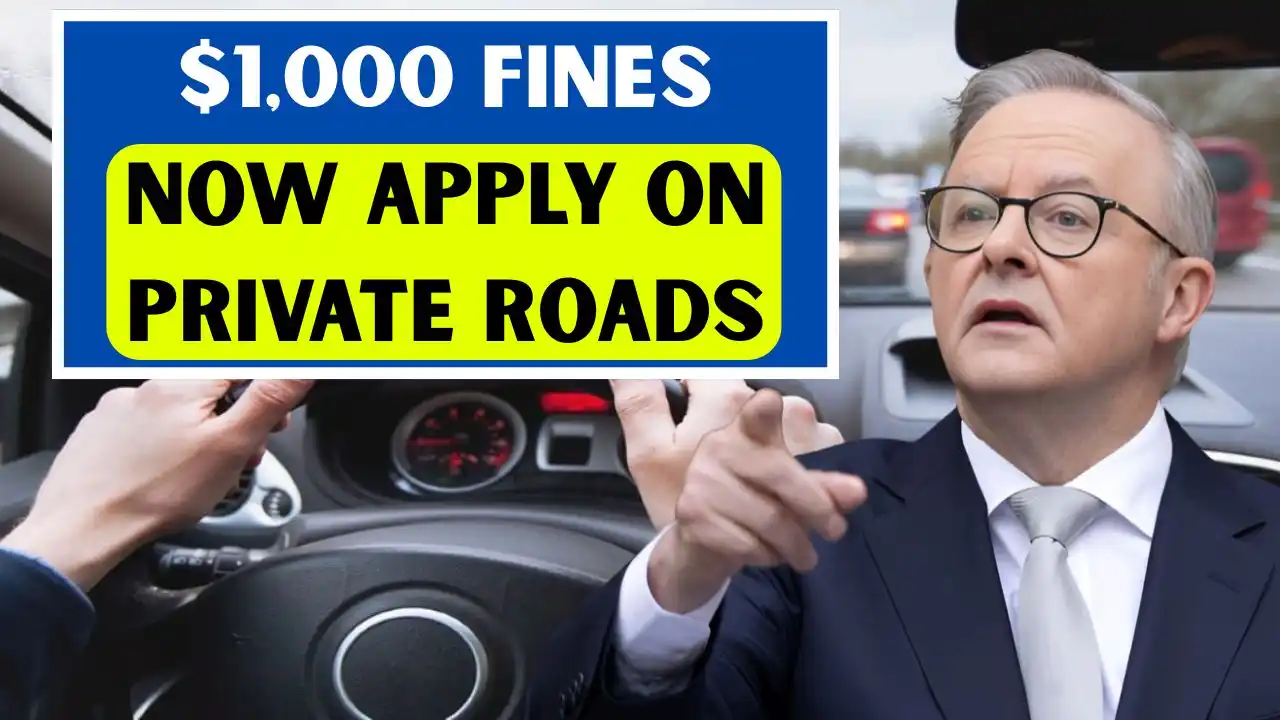The Australian government brought in a $1,000 fine for violations committed on private roads, with the enforcement measures coming into effect in some states as of July 2025. This is a huge transition for authorities in regulating safety and traffic compliances outside the public road network, including in gated communities, mining sites, university campuses, and large industrial estates.
Why Are Private Roads Being Regulated Now?
Historically, private roads have been given lesser regulation than the public roads. Notwithstanding, the mounting incidences of accidents, reckless driving, unauthorised use by vehicles have thrown the mantle of the traffic laws over the private roads. The government figuratively argues that a private road still poses public risk-notably with the delivery drivers, staff vehicles, and visitors-which requires an injunction.
As such, the new regulation brings private roads to maximum parity with public roads in terms of safety; hence driver behaviour will remain consistent no matter the ownership of the road. This was also a response to pressure from safety activists and local councils where they have noted increasing incidents in such private residential commercial areas.
The Particular Offence Attracting the $1,000 Fine
More newly levied fines are for offences in particular categories, such as speeding, illegal parking, reckless driving, unregistered vehicle, or refusal to obey signage or valid instruction from an authorised person. Although this will mostly apply inside private property, the same punishments apply as on public roads-initial fines start from $1,000 upward, depending on repetition.
Strict enforcement of offences, however, will stand in certain areas like school grounds, shopping centres, and warehouse loading bays, with private security or property management entitled to give such reports directly to the authorities.
Who Will Enforce the Fines on Private Roads
Local governments, road authorities, and in certain cases, designated private security agencies may be authorized to report infringements and_file_suits_against_fines. Camera systems and sometimes number plate recognition systems are used to uphold these infringements, especially in busy private commercial precincts or car parks.
Drivers are required by law to obey limits and other eye-catching notices posted on private roads given to the use of the general public or to employees and contractors. Such a measure of enforcement aims to annihilate all legal ambiguities and give the least hint that anyone should treat private spaces with the same care and responsibility accorded to public ones.
Legal Backing and Driver Responsibility
The implementation of this new system has given rise to enhancements in respective state’s and territory’s road safety laws, particularly with regards to the application of public road rules on private land accessible to the general public. The changes attempt to establish that being on a private road is not a legal shield against criminal fines for traffic offences, especially when the concerned property is used for public or commercial purposes.
Drivers now need to observe, read, and obey all road signs, barriers, and directions while within the premises of a shopping centre car park, large residential estates, or worksite access roads.
Public Reaction and Impact
Although some motorists were said to have expressed negativity towards the severe penalties, road safety bodies and insurance companies welcomed the move so much. According to them, the new fines will decrease collisions, cause less damage to property, and bring clarity to liability matters in those places where enforcement was hitherto questionable or inconsistent.
Those living in gated communities and strata-managing estates have also lent their support to it, opining that safety for the pedestrian and the child will get better in the high-density zones. On the other, certain critics contend that signage and education must precede all large fines so that the driving public can learn the rule changes.
Conclusion
The introduction of $1,000 fine on private roads in Australia gives a bring home the bacon in road safety and traffic enforcement. As these changes take effect, the instructions are clear: to drive on private roads with the same emphasis on caution and legal awareness that they would an unfamiliar public road. The objective is clear: to reduce avoidable incidents, encourage responsible driving, and provide for safety standards to stand irrespective of the destination signs on roads.
